Million-Dollar Business Owners Share Insights From Their Journeys
Let’s say you are traveling to a place you’ve never been before. Would you jump in with blind eyes and an open mind? Or would you ask around for advice from someone who has journeyed there before you? Even the most adventurous of us would likely set ourselves up for success by seeking advice. The same goes for women business owners looking to scale their businesses to the next level. Here, we spoke to several NAWBO members who own businesses that they have grown to $1 million or more in revenue. They share about their companies, how they have evolved, the challenges they faced and lessons they learned, their best advice and what’s their next level of growth.
Tell us a little bit about your business.
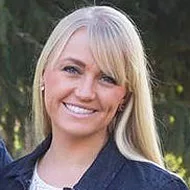 Kimmi Wernli, president of Crazy Richard’s Peanut Butter Company: I am the first female president of one of the oldest natural food companies in the nation, the Krema/Crazy Richard’s Peanut Butter Company. Our product line up includes peanut butter, almond butter, cashew butter and a new line of performance peanut butter, including the increasingly popular product—powdered peanut butter. Our original and best-selling product is our single ingredient peanut butter, which is distributed through various grocery store chains in every state across the country.
Kimmi Wernli, president of Crazy Richard’s Peanut Butter Company: I am the first female president of one of the oldest natural food companies in the nation, the Krema/Crazy Richard’s Peanut Butter Company. Our product line up includes peanut butter, almond butter, cashew butter and a new line of performance peanut butter, including the increasingly popular product—powdered peanut butter. Our original and best-selling product is our single ingredient peanut butter, which is distributed through various grocery store chains in every state across the country.
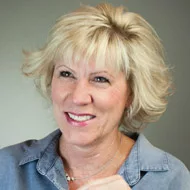 Jill Kerrigan, president and owner of JAK Creative Design: JAK Creative Design is an independent marketing and design agency that I founded more than 20 years ago. We specialize in brand identity design, digital and print marketing collateral, packaging design and much more. Our clients range from local small businesses to Fortune 500 companies such as American Express and Exelon Corporation. We are based in the western suburbs of Chicago and have 16 people on our team.
Jill Kerrigan, president and owner of JAK Creative Design: JAK Creative Design is an independent marketing and design agency that I founded more than 20 years ago. We specialize in brand identity design, digital and print marketing collateral, packaging design and much more. Our clients range from local small businesses to Fortune 500 companies such as American Express and Exelon Corporation. We are based in the western suburbs of Chicago and have 16 people on our team.
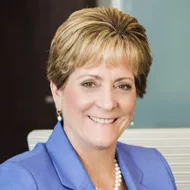 Lynda Buel, CEO of Security Risk Management Consultants, LLC (SRMC), LLC: SRMC is a professional, independent security consultancy serving clients throughout the United States and abroad. We have worked in more than 36 states as well as the District of Columbia, Cayman Islands, China, Egypt, India, Ireland, the Netherlands, Saudi Arabia, Singapore, Spain and the United Arab Emirates. SRMC is a certified Woman’s Business Enterprise (WBENC) and Economically Disadvantaged Woman Owned Small Business (EDWOSB) with a staff of 10 consultants and three administrative personnel. SRMC is headquartered in Columbus, Ohio, with satellite offices in Nashville, TN, Charlotte, NC, and Ann Arbor, MI.
Lynda Buel, CEO of Security Risk Management Consultants, LLC (SRMC), LLC: SRMC is a professional, independent security consultancy serving clients throughout the United States and abroad. We have worked in more than 36 states as well as the District of Columbia, Cayman Islands, China, Egypt, India, Ireland, the Netherlands, Saudi Arabia, Singapore, Spain and the United Arab Emirates. SRMC is a certified Woman’s Business Enterprise (WBENC) and Economically Disadvantaged Woman Owned Small Business (EDWOSB) with a staff of 10 consultants and three administrative personnel. SRMC is headquartered in Columbus, Ohio, with satellite offices in Nashville, TN, Charlotte, NC, and Ann Arbor, MI.
SRMC provides vulnerability assessment, master planning, security technology assessment, design development, technical specification, crisis plans, emergency procedures and project and program management support services to a wide range of public and privately owned occupancies. SRMC serves colleges and universities, healthcare and hospital facilities, state and local government buildings, mixed-use developments, large-scale retail venues, multi-residential housing units, DoD/DoE and other research complexes, data centers, critical infrastructure and corporate offices, among others.
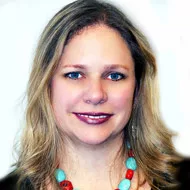 Molly Gimmel, CEO of Design To Delivery Inc: Design To Delivery is a government contracting firm, and we serve the Navy and several civilian agencies by providing personnel with expertise in procurement and acquisition, project management and financial management. We currently have about 90 employees and revenues of $10.5 million per year.
Molly Gimmel, CEO of Design To Delivery Inc: Design To Delivery is a government contracting firm, and we serve the Navy and several civilian agencies by providing personnel with expertise in procurement and acquisition, project management and financial management. We currently have about 90 employees and revenues of $10.5 million per year.
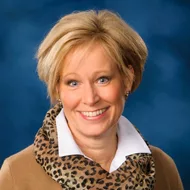 Jennifer Kuntz, founder and CEO of Greenleaf JTS, Inc.: Greenleaf Job Training Services is a for-profit social enterprise serving a niche segment of the Central Ohio population. We provide staffing solutions to companies in need of a qualified workforce, and we provide on-the-job training for our clients who fill those needs. Our clients are veterans, individuals with learning disabilities, those who’ve suffered traumatic brain injuries, people with visual and hearing impairments and others who face significant barriers to employment.
Jennifer Kuntz, founder and CEO of Greenleaf JTS, Inc.: Greenleaf Job Training Services is a for-profit social enterprise serving a niche segment of the Central Ohio population. We provide staffing solutions to companies in need of a qualified workforce, and we provide on-the-job training for our clients who fill those needs. Our clients are veterans, individuals with learning disabilities, those who’ve suffered traumatic brain injuries, people with visual and hearing impairments and others who face significant barriers to employment.
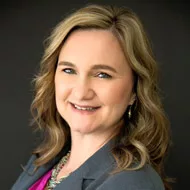 Caryn Foster Durham, CEO of Charles Ryan Associates: Charles Ryan Associates (CRA) is a brand communications firm offering full-service advertising, public relations, social and digital strategies. In short, we work with our clients to develop, grow, enhance and protect their brands.
Caryn Foster Durham, CEO of Charles Ryan Associates: Charles Ryan Associates (CRA) is a brand communications firm offering full-service advertising, public relations, social and digital strategies. In short, we work with our clients to develop, grow, enhance and protect their brands.
Across our four decades in business, we have represented Fortune 100, non-profits, federal, state and local brands. The clients we serve have a desire to communicate a message about their brands to their target audiences.
We have been recognized by AdWeek as one of the Top Advertising Shops in the United States and have 32 employees between our two offices located in Richmond, Virginia, and Charleston, West Virginia.
Here is a clip of how we describe ourselves to those who may want to work with us: Who’s the You?
Did you set out from the beginning to become a million-dollar business or did it just evolve over time?
Kimmi: I am a second-generation owner in our family business. It was always a dream to grow to the million-dollar business level, of course! And I wish I could say it happened overnight, but our business has achieved steady growth over the past few decades to make it the powerhouse in the nut butter category of the natural foods industry that it is today.
Jill: It has definitely evolved over time. My goal when I was starting out was to give my clients first-rate work and a first-class experience, and I think the company’s growth has been the result of that approach rather than something I set out to do.
Lynda: The business has continually evolved and we are on the cusp of some exciting growth. In the last 3-and-a-half years alone, we have doubled our staff and expanded to three other states.
Molly: No, it evolved. When my business partner Diana and I started the company in 2001, it was to be just the two of us as consultants to government contractors. But in less than a year, we had more work than the two of us could handle so we started hiring people. In year four, we reached the $1 million revenue threshold and we stayed right around there ($1-1.5 million) for the next six years. In 2010, we decided to change our focus to pursuing government contracts for ourselves, and our revenue grew exponentially over the next several years to where it is today.
Jennifer: It evolved over time. My passion has always been to provide a better service to individuals with differing abilities so that they may achieve independence and self-sufficiency. The fact that Greenleaf has surpassed the million-dollar mark tells me we are on the right path!
Caryn: It has been a thoughtful and strategic journey to build and maintain a multi-million-dollar firm. This has been accomplished through hard work, a fantastic staff and an amazing list of clients.
The communications industry has experienced more change in the last 15 years than most industries have in 50. To put it into perspective, LinkedIn launched in 2003, Facebook was offered to the public in 2006 and the iPhone was introduced in 2007—all less than 15 years ago!
The evolution is continual, as we must help our clients keep their brands relevant as communications and technologies change.
What’s the one best piece of advice someone gave you as you worked to grow to that level?
Kimmi: Don’t be afraid to say NO to good ideas.
Jill: It sounds simple, but: Don’t grow too fast! You might quickly find yourself in a situation where the demands on you and your business are so overwhelming that they consume you.
One of the best lessons I have learned is how important it is to set up a clear business growth plan and stick to it. You’ll experience ups and downs along the way, but with a plan in place, you’ll always know where you’re ultimately trying to go.
Lynda: Find your voice, be true to yourself and always deliver more than is expected.
Molly: Don’t bother having a long-term plan set in stone, because you’ll miss opportunities that you hadn’t even known about when you created the plan.
Jennifer: Being an entrepreneur, I knew how to do the work Greenleaf provides, however, I had never run a business before. It was a bit overwhelming to think I instantly needed to know everything there was to know about running a company. The best piece of advice came from someone from whom I was seeking advice—“Surround yourself with people whose areas of strength match the areas in which you are weakest.” That advice has served me well, and I continue the practice even today.
Caryn: Dr. Martin Luther King Jr. stated, “The ultimate measure of a man is not where he stands in moments of comfort and convenience, but where he stands at times of challenge and controversy.”
Building a business happens through successes and failures and that requires strength of character.
We manage our business with purpose and integrity. Purpose allows us to set processes and establish rationale for decisions. Integrity demands we meet the expectations we have set for ourselves.
We understand there is no greater brand than our word.
What was one of the greatest challenges you faced along the way and how did you overcome it?
Kimmi: We spent a lot of time, money and energy trying to pursue a path that wasn’t right for us. When we launched our performance peanut butters, I was convinced that they would be best suited for specialty shops, fitness gyms and vitamin stores. I did not initiate thorough enough research beforehand and showed up to meetings with information and data that did not meet their clients’ expectations. Basically, the products I thought would fit best into a certain category were actually much better suited in a completely different direction. We overcame this challenge by making a complete switch in business model for our new line and shifting our efforts to the new strategy. Sometimes you have to step back and actually listen to the outsiders who are trying to rain on your parade, and then turn around and find a new road that you can take your parade down.
Jill: JAK’s biggest challenge came in 2013. Our largest client put on a mandatory work stoppage—more than 100 projects were put on hold. I was faced with a very difficult decision, and in the end, I asked all my employees to take a temporary pay cut. Every single employee, without hesitation, took the pay cut. I was so inspired by the whole team.
Lynda: Realizing that I did not have to succeed at everything and learning to set boundaries. Women are expected to do well in all facets of our lives from taking care of our family, friends, career, always looking our best, etc. It can be a daunting task to say the least. I had to learn that it was OK to say no!
Molly: In 2009, when we were still focused on consulting for government contractors, our biggest client went bankrupt, owing us A LOT of money. We had to lay off a couple folks and Diana and I didn’t take paychecks for several months until we could get the financial house back in order. That was one of the main drivers in deciding to start pursuing our own contracts.
What are a few key lessons you gained in growing your business that you can share with other women entrepreneurs looking to grow?
Jill: Never say never. Listen to your team and your clients. Ask questions and ask for help when necessary—I truly believe that is a sign of strength, not weakness.
You’ll face pressure to produce great work on the first try, every time. Be tenacious, and always strive to exceed your goals.
Lynda: Learn to connect, build relationships and a support network, always remember your customer and appreciate them and the skill of sales and marketing is critical to your success.
Molly: One of the biggest lessons is that you should look for opportunities for recurring revenue. Long-term contracts with low margins are better than short-term contracts with higher margins, because it’s steady money over a longer period of time, and you’re not having to constantly market for new customers. Also, it’s important to take care of your employees so they’re happy and take care of your customers, but don’t be afraid to let an employee go if they’re not a good fit.
Jennifer: Lesson #1: Work ON the business, not just IN the business! Working ON the business means taking the time to create the framework from which your business is to develop and grow. For example, I was able to hire people to help with the day-to-day work within the business, which freed up more of my time to work ON the business. My time was spent creating a vision, establishing values, creating a strategic plan, etc.—the building blocks for any business. It wasn’t long after that Greenleaf experienced significant growth.
Lesson #2: Put systems and processes in place as quickly as possible, and have them written down! They provide structure and consistency as the business grows. Also review them every year because with growth comes change, and change is best when done with intention, not hit-or-miss. We affectionately refer to our written systems and processes as the “Book of Knowledge.” It serves as a clear reminder to both new hires and long-term staff as to “the Greenleaf way” for providing services, documentation, billing, etc.
Caryn: I learn new lessons all the time. I am certain that one day there will be a book! Until then, I offer two things that continue to serve me well.
Prioritize. Juggling the duties and responsibilities of being a wife, mother and business owner is daunting. Be unapologetic about prioritizing what is important to you, your family and your business. What works for you and your life may not be what works for someone else, so avoid comparing yourself to others.
Know what works. CRA is not always the right fit for every client. Clients who are willing to invest in their brands are the right match for us. If they value their brand and our role in assisting them to develop, grow, enhance and/or protect their brand, the relationship works regardless of budget. Saying no to a new business opportunity is always hard but sometimes you just have to walk away.
What’s next for you and your business in terms of growth and how will you get there?
Kimmi: We have great saturation in the New England, Mid-West and Southern regions, but we really see growth potential out west, along with adding our new products to different sections or locations inside the grocery stores. We are adding sales reps to our team and have been attending new expos and events where we have been able to get our products into the hands of consumers and buyers from our industry and crossover industries as well.
Jill: I recently completed the Goldman Sachs 10,000 Small Businesses program and I’m excited to focus even more on my growth plan for JAK. I want to continue to diversify our client base in the coming years and onboard four new clients by the end of 2017. I’ve been laying the groundwork by launching JAK’s rebrand earlier this year—complete with a new website—focusing even more on marketing efforts and continuing to attend networking events and meeting new people.
I’m going to allow my talented team to do what they do best and work in the business while I work on the business.
Lynda: We are embarking on some very exciting times of growth, adding more staff in 2017 as well as additional services for our customers. We are engaging in an aggressive marketing initiative to educate the world on who we are and what we do, because thought leadership in our industry is a critical component to validating our expertise.
Molly: Continued growth by expanding our service capabilities and expanding our customer base.
Jennifer: Greenleaf is on the cusp of yet another growth spurt with the diversification of our services and expansion of our customer base. Over the next few years, I will help mentor in a new generation of leadership to ensure our growth is sustainable.
Caryn: It has been an exciting and invigorating year! In addition to it being our first year with the new ownership structure, we experienced a significant amount of growth in both client work and staffing. As we look forward to 2017, we see no signs of stopping.
Additionally, we self-certified as a Women Owned Small Business with the Small Business Administration and are in the process of our third-party certifications with the U.S. Women’s Chamber of Commerce and Women’s Business Enterprise National Council. Part of our new business plan includes a dedicated effort to identify opportunities through these channels.
While pursuing these new opportunities, we must keep a close watch to ensure we are properly servicing our clients and providing the support necessary for the new staff as we continue to grow.
What’s the most rewarding part of being part of the million-dollar women’s business club, which accounts for just 3% of WBOs currently?
Kimmi: I have enjoyed the opportunity thus far to connect with women who have experience and a wealth of ideas to share regarding being a female in a workplace primarily dominated by men. NAWBO Circle has given me instant friends and a network of resources that would’ve taken me years to try and acquire on my own.
Jill: Just being part of such a unique and dynamic group of women entrepreneurs far outweighs any sales figure! It’s inspiring to see the positive impact that women and their businesses have on the economy, day in and day out.
Lynda: Being around so many amazing women entrepreneurs and having the opportunity to build that support group I mentioned earlier as well as learn from other women business owners about their trials and tribulations in running a business. It is always nice to know that you are not alone. We all face many of the same challenges as we grow our businesses.
Molly: Getting to interact with and learn from my peers. There are very few people who are dealing with similar issues and challenges, and having a group like the NAWBO Circle provides a community of other women in this demographic for advice and support.
Jennifer: Enduring friendships with extraordinary women; being inspired by remarkably talented women—women who have stretched themselves, gone farther and realized their goals; and mentoring up-and-coming women business owners as they realize their dreams.
Caryn: Hands down, the most rewarding part of being a million-dollar business owner is the opportunity to positively impact the lives of my CRA family.
More WBOs Offer “Best Advice” for Million-Dollar Growth
“Set the goal. Create the plan that will get you to the goal. Then execute the plan. Don’t forget to measure the results to ensure you are on the right path or to determine when you may need to change the path.
And, ultimately, when you are struggling or are just stuck, speak up. There are many opportunities to learn and grow, and many women who have been where you are—especially in NAWBO. They already have the experience and the answers that can guide you. Sometimes, it is enough to just know you are not alone. Other times, it is a simple fix, but we just can’t see it because of our attachment to the outcome.” —Julia Aquino-Serrano, CEO of All Systems Grow
“Focus on knowing all of your financials and studying them weekly, monthly, quarterly and annually. Growth will come from increased margins, add-on business and new accounts; all of these are extremely important.” —Ruth Drizen-Dohs, president and CEO of Drizen-Dohs Corporate Communications (DDCC)
“Get involved in mastermind groups (like NAWBO!) I have found that without these outside groups, we never would have gotten there—but with their help, we’ve gotten to almost $10 million.” —Julie Ayers, CPA, CGMA, CCIFP of LBA Haynes Strand, PLLC

